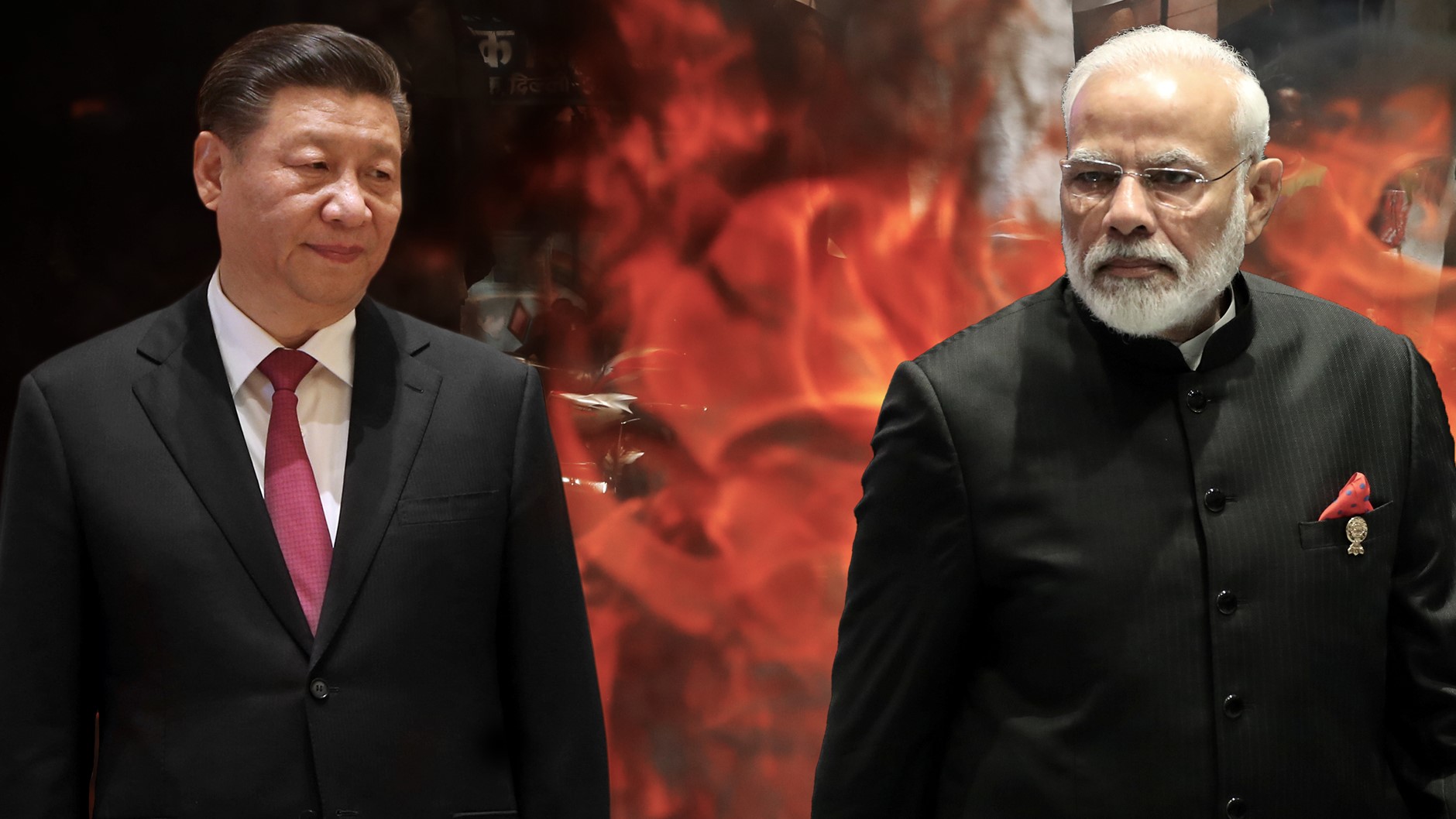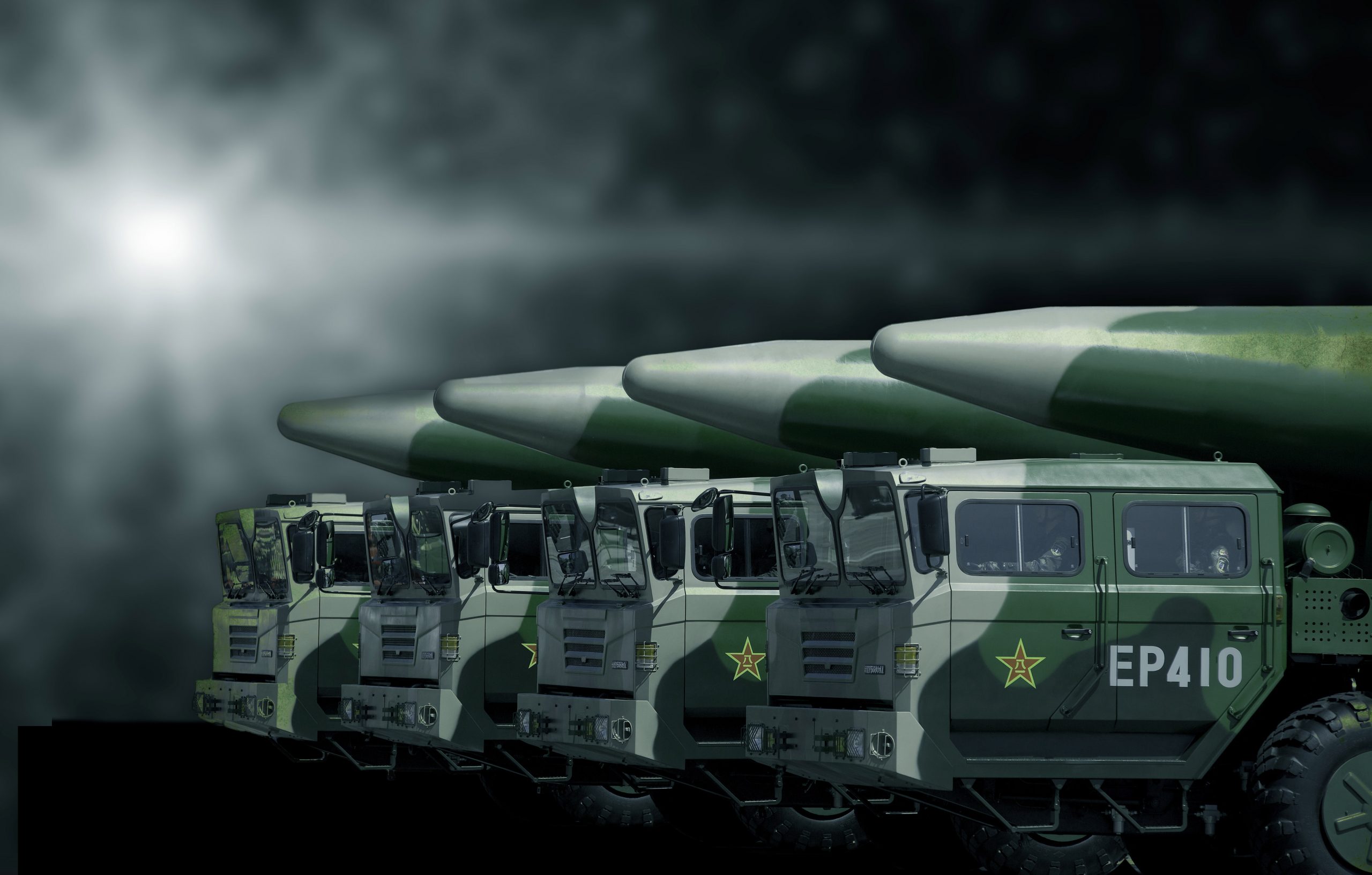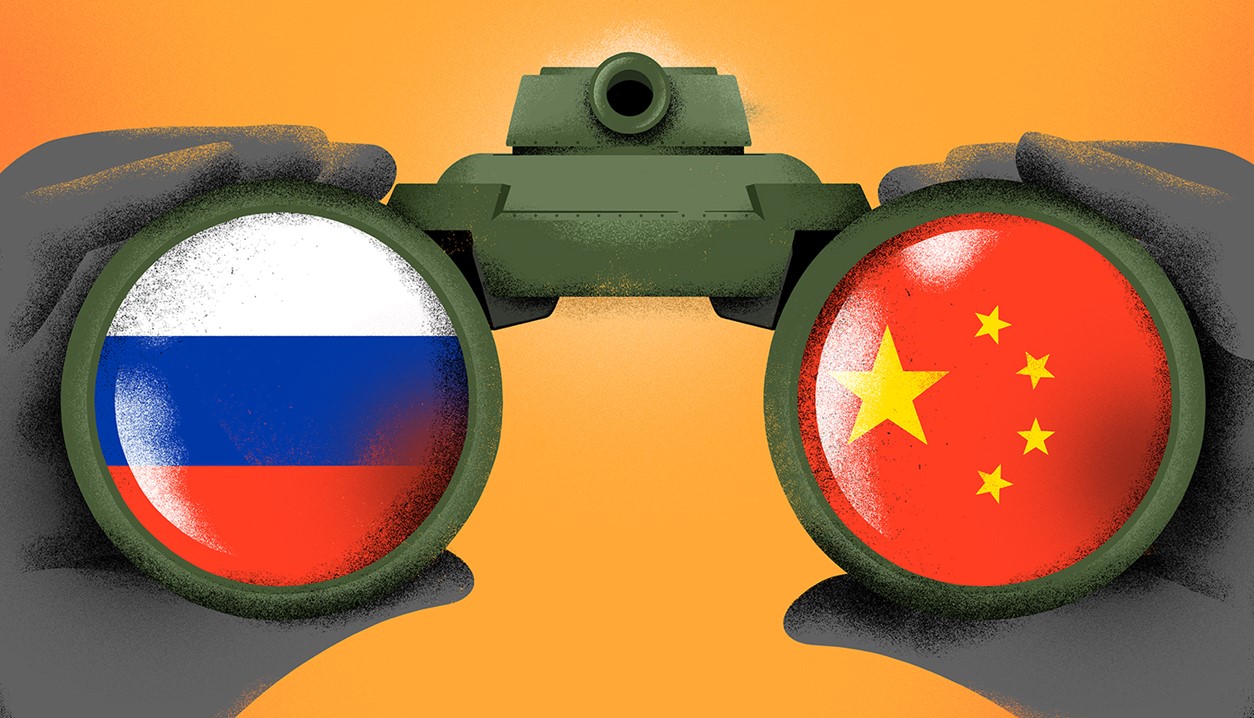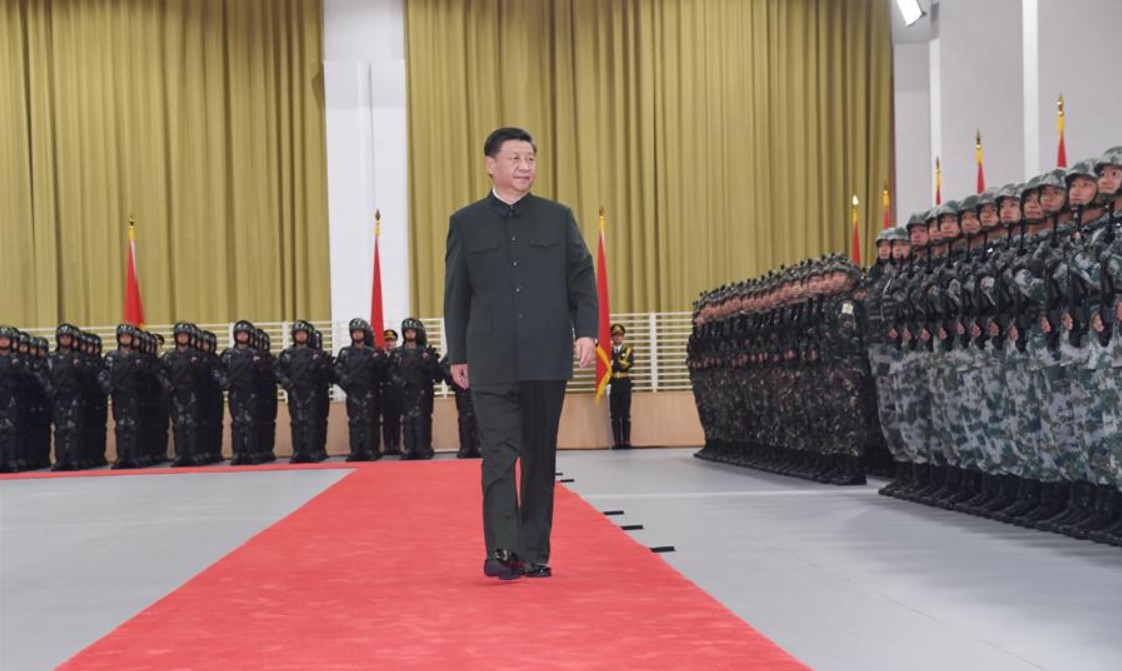
Tackling Chinese Technological Advantage
 Sat, 20 Nov 2021
| Reading Time: 6 minutes
Sat, 20 Nov 2021
| Reading Time: 6 minutes

“China has won the artificial intelligence battle with the United States and is heading towards global dominance because of its technological advances”. When the Pentagon’s former software chief Nick Chaillan made this claim, it felt as if the whole world had come crashing down. The whole episode gave rise to the debate about who’s ahead in artificial intelligence. There is little doubt that India, the US, China, and other world militaries see the critical advantage of technology and its usage, in the event of a conflict. For sure the debate has just begun, and it is not going to die down anytime soon.
If the United States feels that it is losing the technological battle with China, then where does India stand? Are we just mute spectators? Do we always just react or do we have a long-term plan to take advantage of our technological prowess, well-trained workforce, and resurgent private sector? Let us explore.
TRUTH VS PROPAGANDA
In June this year, the People’s Liberation Army Airforce (PLA) reported that an artificial intelligence system has been repeatedly beating top PLA fighter pilots in a simulated dogfight. As we know Chinese state media went bonkers over the achievement. However, everyone conveniently forgot one fact that the U.S. Defense Advanced Research Projects Agency’s (DARPA) AlphaDogfight Trials had achieved similar results, months ago, without much hoopla.
It is a known fact that China indulges in propaganda warfare to exaggerate its achievements regularly. The U.S. has had a clearcut technological advantage until now. So what aspect of the Chinese technological prowess had alarmed Nich Chaillan? What forced him to make this expose and resign from his post? Indian policymakers must analyze the whole episode, thoroughly.
Thanks to the Chinese propaganda machinery, the Indian establishment is also shaken up and has been forced to take notice of these extraordinary developments. The main reason behind India’s proactiveness is the simmering tension between India and China. India is also well aware of China’s use of AI-enabled systems at the LAC. India doesn’t have the luxury of ignoring the fact any longer and has no option but to take steps to reduce the technological gap.
INTELLIGENTIZED FORCE
Ryan Fedasiuk of the Centre for Security and Emerging Technology’s (CSET) produced a report in October this year on the Chinese military’s adoption of artificial intelligence. The report on AI-enabled systems and equipment provides an extraordinarily detailed picture of China’s efforts to build an “intelligentized” force.
PLA’s ‘New Generation AI Development Program’, to become a world-class military commenced in 2017. Within four years China has made considerable progress. Their ultimate aim is to be world leader in AI by 2030. Therefore it paints two scenarios. Firstly, PLA still doesn’t feel that they are world leaders in AI, and secondly, it gives India breathing space for another decade.
The Indian armed forces are heading for a revolutionary change in their structures, through Integrated Theatre Commands. China’s AI-enable projects would be designed to degrade the Indian military’s jointness, especially when it is new and not so cohesive. With AI-enabled systems, they would use techniques like ‘adaptive radar jamming’ and ‘vulnerability fuzzing’ to hit at the core of jointmanship.
Indian forces will have to develop not only AI-enabled offensive but defensive systems too. Study of the Chinese whitepapers discloses that they have plans to use machine learning systems to counter India specific drone systems. This further emphasizes the requirements of guarding the system data and specifications, more than ever.
BUDGETARY GAP
PLA has heavily invested in its AI initiatives. India’s overall defence budget is $65.7 billion. Compared to this the Chinese defence budget is $207 billion. But as per the American Department of Defence (DoD), China’s actual defense spending could be four times larger than its officially announced budget. Stockholm International Peace Research Institute (SIPRI) estimates their actual budget to be 40 percent higher than the declared budget. Any which way, it is a huge budget and puts a strain on Indian policymakers’ budgetary allocation policy.
China spent $378 billion on research and development (R&D) in 2020. Since China has dual usage policy it becomes very difficult to differentiate between civilian and defence R&D. SIPRI estimates their spending on military equipment and R&D to be around 41 percent of their total defence budget. All in all, their defence R&D could be as much as India’s total defence budget.
India spent $17.7 billion on R&D in 2018-19. That is just 0.7% of GDP and way below the targeted 2%. Since this is the overall budget, Defence & Space has a share of approximately 26 percent, or a mere $4.6 billion.
Artificial intelligence funding in India in 2020 was also a measly $949 million. Compared to this a much smaller country, the United Kingdom received $1.3 billion funding during the same period. Despite all that, India shows promise. Artificial Intelligence Index, released by Stanford University’s Institute for Human-Centred Artificial Intelligence (HAI), ranks India at number 6 in research output, economy, and inclusion. India is second only to Brazil when it comes to hiring AI talent.

Courtesy: prsindia.org
INDIA VIS-A-VIS CHINA
In the second half of 2020, over 5 percent of all contracts awarded by the PLA were related to AI or “intelligent” equipment. These included autonomous vehicles, surveillance systems, training simulators, and battlefield decision support software. It is yet to be seen how much Indian armed forces have invested in these fields during the same period.
PLA is heavily investing in AI capabilities that would help in jamming, blinding, and hacking the Command, Control, Communications, Computers Intelligence, Surveillance and Reconnaissance(C4ISR) systems. India may assume that these systems are meant to be used against the United States. However, that is wishful thinking. Mere presence of such systems with an adversary should alarm the Indian establishment.
When the whole world was struggling with COVID-19, PLA units and research institutions utilized that time and invested in “microwave reconnaissance jamming drones” and “electromagnetic weapon” payloads. Swarms of these small unmanned aerial vehicles (UAVs) could penetrate Indian airspace with such payloads attached and create havoc.
The PLA Navy is filling up its undersea warfare disadvantages with the U.S. with the introduction of autonomous undersea vehicles. These vehicles can be utilized for mine-laying or anti-submarine warfare. In last six years they have also made steady progress in foundational technologies like battery life and deep-sea communications. Today AI-based systems are extending the PLA Navy’s undersea reconnaissance operations well beyond the first island chain. Fishermen have caught such vehicles as far as Indonesia. India may not be affected by these capabilities today, but sooner or later we will see these surface and subsurface vehicles in the Bay of Bengal. Indian Navy’s status of adoption of these technologies is unknown.
THE PLA VULNERABILITIES
Despite all the hubbub the PLA has two clear-cut vulnerabilities in its “intelligentized” force blueprint. The five years old Chinese ‘Theatre Command’ structure may crumble if these vulnerabilities are effectively exploited by the adversaries.
The intelligentized forces heavily depend upon the cloud-based networks. China has not given any indication in any of its whitepapers about how it intends to address the vulnerabilities related to information manipulation, data poisoning, and data integrity. An analysis of all the Chinese contracts indicates that China has not even started working in that direction.
China’s “intelligentization” strategy is based on access to chips for AI-enabled systems. China heavily depends upon U.S. companies for access to such technology. Taiwan is the major manufacturing hub for U.S. companies. Therefore access to such technology is highly controlled. In fact, the United States has already placed embargo on China’s access to these chips. Without access to these chips, China’s ‘Tower of Babel’ of intelligentized warfare would come crumbling down.
INDIAN STRATEGY
There is no doubt that India has to do a lot of catching up with China and that too in a very short time. The Indian ‘Theatre Command’ structure is about to get a shape. A proper planning will mitigate many future issues and prepare the forces for a future war. Following are the recommendations for the Indian Planners:
- Boost own autonomous vehicle industry using PPP model
- Create inexpensive platforms based on the principles of mosaic warfare
- Thrust to research in manned/unmanned teaming, keeping futuristic carrier borne unmanned flights in mind
- Boost investment in counter-autonomy and adversarial AI research
- Create models to exploit Chinese system vulnerabilities
- Strengthen own AI systems vulnerabilities
- Scale up investment and regulate organizations like DRDO
- Enhance budgetary allocation for R&D
- Until own capabilities have caught up, forge partnership with friendly countries
Artificial intelligence and its importance and utilization in a future war cannot be emphasized any more. The Indian armed forces need to undergo a sea change in the way, how they plan to fight a future war, and what force structure would be capable of fighting that war. I am sure India has come out of World War 2 syndrome, but today even concepts of the 70s and the 80s are inadequate. And what better way to usher those changes in when India celebrates ‘Swarnim Vijay Varsh’, the 50th anniversary of the Indian armed forces victory in the 1971 INDO- PAK war.
************
Disclaimer
The opinions expressed in this article are the author’s own and do not reflect the views of Chanakya Forum. All information provided in this article including timeliness, completeness, accuracy, suitability or validity of information referenced therein, is the sole responsibility of the author. www.chanakyaforum.com does not assume any responsibility for the same.
Chanakya Forum is now on . Click here to join our channel (@ChanakyaForum) and stay updated with the latest headlines and articles.
Important
We work round the clock to bring you the finest articles and updates from around the world. There is a team that works tirelessly to ensure that you have a seamless reading experience. But all this costs money. Please support us so that we keep doing what we do best. Happy Reading
Support Us





















POST COMMENTS (25)
JJ
Shailender
HARBANS KHAJURIA
Gp Capt TR Ravi
Nilanjan Biswas
Rakesh P
Dhirender Gaur -a fellow traveller
Cdr Deepak Singh
Shaunak
Deovrat Pagay
D'Nanda Dunham
Tapan Jatakia
Raghu
Cdr Mathews
Nitin A S
Judithann Campbell
Shaily rawat
Sid Gupta
Narinder
Gyan Sharma
Wendell Bruges
Rajiv Gaur
Rammohan
Gaurav Chaturvedi
Joseph Mathew